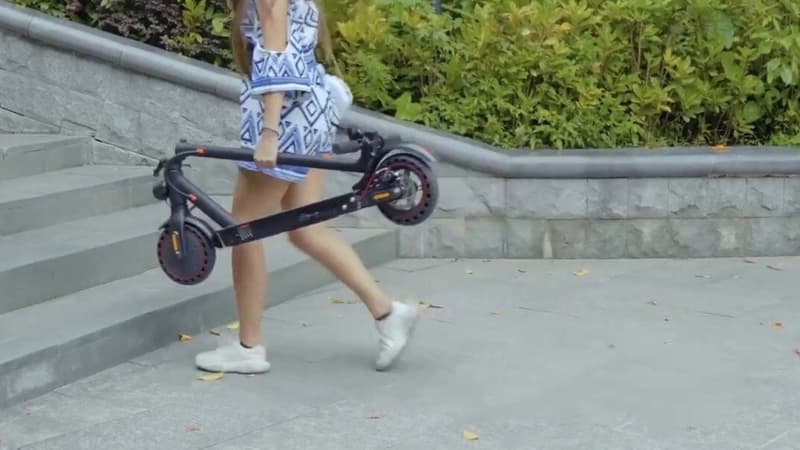Parisians have decided to exclude self-service scooters from the capital. This measure will apply from September 1. But the latter risk having to live for a long time with these devices that are used daily by between 2.5 and 3 million French people. A study carried out by the Smart Mobility Lab and the Federation of Micromobility Professionals (FP2M) shows the weight of scooters in daily commuting and in the French economy.
“Electric scooters are not limited to self-service. In our country, a total of 2.5 million personal scooters are used, it is no longer anecdotal at all”, explains Jean Ambert, founding president of Smart Mobility Lab, an organization that studies the development of these new forms of mobility, to BFM Business. and director of studies of the FP2M.
345 million turnover in 2022
According to the latest figures published by FP2M, 900,000 scooters were sold in France in 2021 and 759,000 in 2022, that is, triple the number in 2019. Taking self-service scooters into account alone, the latter allowed 100,000 trips to be made last year. “It’s the tip of the iceberg,” explains Jean Ambert.
Both personal and shared electric scooters simplify multimodal travel. It is no longer uncommon to see users on public transport with a folded scooter.
“Sales are falling [en 2022, ndlr], but the billing of the sector is increasing. This market is consolidating and we are witnessing an anchoring of this practice on a daily basis”, Jean Ambert, founding president of Smart Mobility Lab (FP2M), told BFM Business.
The total turnover of the EDP (Personal Transport Device) market reached 450 million turnover in France in 2021. Of this amount, the weight of the scooters is around 300 million euros. A figure that increased to 345 million euros last year.
The increase in the average price
“We are still far from the electric bicycle, of course, but it is a complementary use. We see, for example, that sales of electric scooters were higher last year than those of electric bicycles”, says Jean Ambert.
The average price of each scooter sold has risen last year: 455 euros in 2022 compared to 341 the previous year. Above all, sales of vehicles under 300 euros have plummeted (-54%) when those of vehicles over 500 euros already represent 20% of purchases.
The theft of non-registration mobility devices certainly works in favor of the scooter over the bicycle. In fact, it can be transported home and recharged at a domestic socket in an apartment. Its low cost of use is also an advantage. According to the Smart Mobility Lab study, 50% of users save between 30 and 100 euros per month on their travel budget.
Better regulate uses
This enthusiasm has had negative consequences on road safety with accidents, sometimes fatal, on the rise. It is about an increase in practice, but also about the risks assumed by the pilots and the circulation of several on the same machine that make piloting dangerous.
In Paris, in 2022, 3 people were killed and 459 others injured in 408 motorized personal transport vehicle (EDPM) accidents, including electric scooters, unicycles, Segways, and hoverboards. Between 2019 and 2022, the number of accidents will increase by 600%.
The department of physical medicine and rehabilitation at the Cochin hospital in Paris has registered an “explosion” of accidents involving electric scooters. This increase clashes with the “decline” of traffic accidents in which “cars, scooters, motorcycles, pedestrians” are involved.
To curb this curve, the Ministry of Transport has announced its intention to better regulate the use of these machines. Yeah mandatory use of helmet It is not part of the measurements. On the other hand, the minimum age to use an electric scooter on public roads will increase to 14 years compared to the current 12. Dangerous behaviors, such as driving as a couple or driving on prohibited lanes, will be penalized more severely. The fines that sanction them will increase from 35 euros to 135 euros.
For their part, Lime and Dott, EPDM self-service operators, have developed systems to prevent multiple people from traveling on the same machine. “We have to accept that there are new mobilities and new means of transport, but as we have done before with all means of transport, we have to move from an anecdotal stage, sometimes folkloric, sometimes mobilities that unfortunately are considered as games or toys. in a stage of supervision, regulation, seriousness and appeasement of minds”, considers Jean Ambert.
Source: BFM TV


